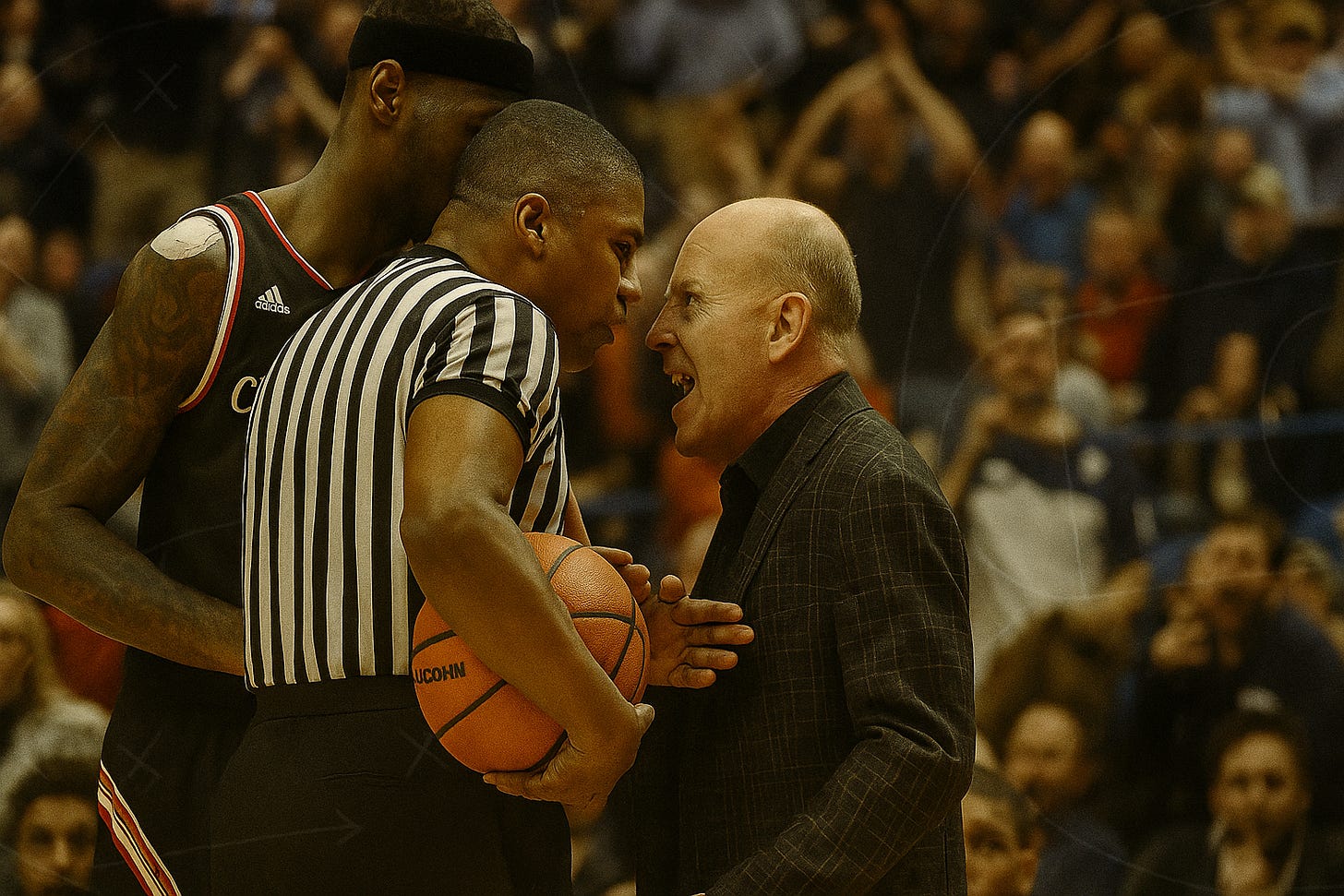3 Strategies for Redirecting Negative Behaviours Without Public Confrontation
When you handle behaviour with respect and intentionality, you teach more than basketball. You teach composure, emotional regulation, and leadership.
As a coach, I am constantly balancing between holding players accountable, keeping the practice environment positive, being competitive and having a growth mindset.
However, due to the game being emotional, frustrations are part of the game. Whether it is in practice or in a game situation, players may occasionally roll their eyes, check out mentally, blame others, complain about everything, and at times be disrespectful.
As a young coach, my natural impulse was to respond immediately and publicly.
After all, the behaviour can’t go unchecked. But I’ve learned that public confrontations often backfire. They may embarrass the player, escalate the situation, or turn a teaching moment into a power struggle.
So, how do we redirect negative behaviour without putting players on blast?
Here are three simple, effective, and respectful strategies that have helped me address behaviour in the moment, without compromising the team dynamic or the individual’s dignity.
🔹 1. The “Side Conversation” Strategy
🧠 Why It Works:
Pulling a player aside, literally and figuratively, signals that the issue matters without making it a spectacle. It preserves the player’s dignity, prevents public shaming, and often leads to more honest communication.
✅ How to Use It:
Wait for a natural break in the drill, a timeout, or a sub rotation.
Approach the player quietly and ask, “Can we talk real quick?”
Keep the tone calm and curiosity-driven, not accusatory. Try:
“Hey, I noticed your body language dropped earlier. What’s going on?”
🎯 What You’re Teaching:
That negative behaviour will be noticed and addressed
That connection comes before correction
That you’re a coach who sees the person, not just the player
🔄 When to Use:
Perfect for body language issues, disengagement, sulking after mistakes, or effort lapses.
Bonus Tip: After the chat, give the player a clear opportunity to reset. “Show me how you bounce back on this next rep.”
🔹 2. The “Redirect with Responsibility” Strategy
🧠 Why It Works:
Sometimes, the best way to change behaviour isn’t with correction. it’s with responsibility. Giving a player a small leadership or engagement task can flip their mindset from passive or negative to active and invested.
✅ How to Use It:
Identify the behaviour: lack of effort, disengagement, negativity, etc.
Instead of calling it out, assign a new focus. Examples:
“You’re on huddle watch, make sure everyone’s locked in during the timeout.”
“You’re leading the next warm-up round. Keep the energy up.”
“You’re our talk tracker, count how many times we call out screens.”
🎯 What You’re Teaching:
That being off-task won’t be ignored, but also won’t be punished
That every player has value, even when they’re struggling
That responsibility can be a reset button
🔄 When to Use:
Great for players with attention dips, attitude swings, or those who act out due to boredom or frustration.
Bonus Tip: Acknowledge their effort privately afterward:
“I noticed you picked it up. I appreciate the way you led that.”
🔹 3. The “Post-Practice Playback” Strategy
🧠 Why It Works:
Some issues don’t need to be addressed at the moment. They’re best handled later, in a space where reflection, not reaction, can take place.
This approach allows for cooler heads, deeper conversations, and less emotional volatility.
✅ How to Use It:
Let the behaviour pass in the moment (as long as it’s not disruptive to others).
After practice, ask for a few minutes. In private, review what happened. Try:
“Can we talk about what happened around the 3v3 drill today?”
“What were you feeling when that sub happened?”
Ask open questions. Give them space to explain. Listen first, speak second.
🎯 What You’re Teaching:
That behaviour has an impact, even if it isn’t called out instantly
That reflection leads to growth
That trust exists even in correction
🔄 When to Use:
Ideal for more complex or emotional situations, disrespect, complaints, teammate conflict, or consistent low energy.
Bonus Tip: End the conversation with an actionable step for next time:
“If this happens again, how do you want me to support you?”
🧩 Why This Matters
Redirecting behaviour isn’t about control—it’s about growth.
And while public confrontations may feel justified in the heat of the moment, they often miss the mark. The player might feel targeted, humiliated, or misunderstood. Worse, they might emotionally shut down or withdraw from the team culture.
These strategies offer something better:
Accountability without ego.
Correction without conflict.
Support without softness.
As coaches, our job isn’t just to teach skills or manage effort; it’s to develop people. And that requires a coaching toolbox that includes firmness, patience, and emotional intelligence.
🔚 Final Whistle: Be the Mirror, Not the Hammer
Players don’t always need a hammer to the head.
Sometimes they need a mirror, a chance to see themselves, reflect, and recalibrate.
When you handle behaviour with respect and intentionality, you teach more than basketball. You teach composure, emotional regulation, and leadership.
And that’s coaching at its best.


